
It’s incredible how many plants there are in the average garden that you can grow again next season for free. Many gardeners take this fact for granted and purchase seed packets, or nursery starts year after year.
And there’s nothing wrong with that.
For many of us, drooling over the annual The Whole Seed Catalog from Baker Creek Heirloom Seeds is akin to marking pages in the Sears Christmas Wish Book.
(Yes, I’m that old.)
Some people just find it easier to use nursery starts. Let’s be honest; starting seedlings yourself has its own pitfalls. While I’m always very proud of my tiny little seedlings, and they do well in the garden, they never look as hardy as anything from a professional nursery.
All that being said, I do think there’s one area of the garden where everyone should be getting free plants – the herb garden.
It’s easy to propagate herbs from cuttings.
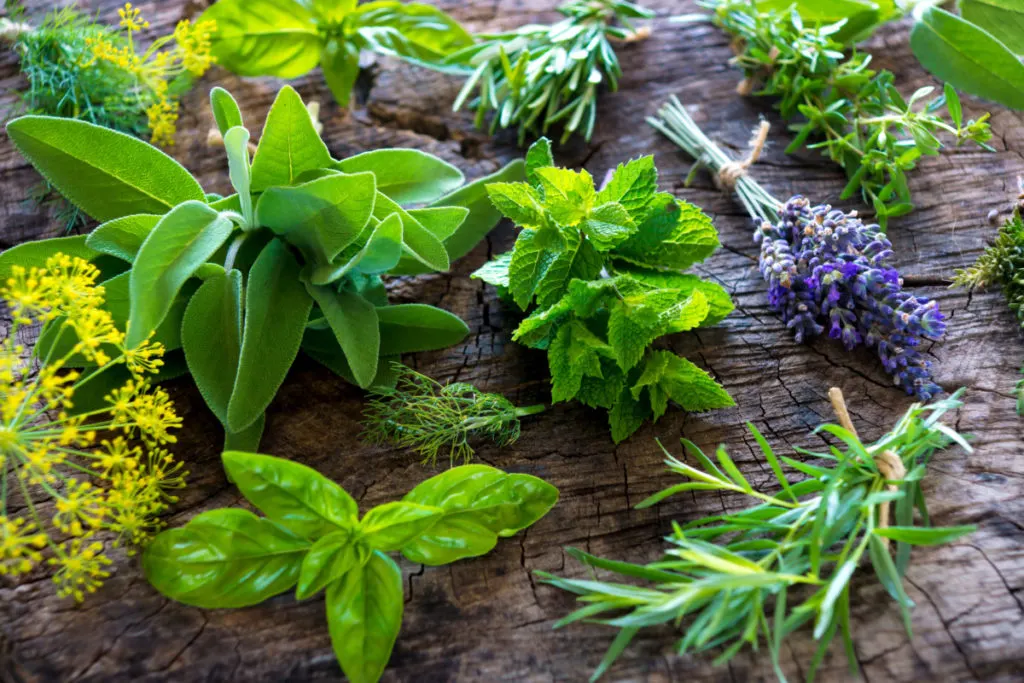
With a little extra time and patience, you could easily double your lemon balm patch, start a few cuttings to bring inside once the temperatures drop, or grow new rosemary plants to give as gifts to the cooks in your life.
There are so many herbs that are easy to propagate by cuttings. You may never have to buy a nursery start again. And with your expansive herb garden, you can say goodbye to expensive packets of fresh herbs from the grocery store. Depending on how carried away you get (why are you looking at me like that), you could repopulate your entire neighborhood in peppermint.
And as you all know, it has to be easy to do if I’m sharing it. The world’s laziest gardener, checking in, hey-oh!
Grab your kitchen shears, a few empty jars and let’s get growing.
Propagating Herbs from Cuttings
Like nearly everything else on this planet, herbs want to grow, replicate and take over the world. You can propagate most plants with a cutting.
Propagation is easily done but requires a bit of patience. It often takes a month or two for cuttings to develop a decent root system. Keeping this in mind will help you choose which herbs to propagate and which to grow from seed or a nursery start.
Some herbs are easier than others to propagate from cuttings. I’ve put together a list of these herbs for you later in this post.
Making Your Cutting
Whenever you plan on taking a cutting from a plant, herb or otherwise, it’s important to use a sharp and clean tool. A pair of scissors, small gardening snips or even a sharp paring knife can all be used. Wash the blades with soapy water if they need it, and then disinfect them by wiping the cutting edge’s surface with a cotton bud soaked with rubbing alcohol.
Using dirty tools can introduce bacteria or other pathogens to your plants, which can quickly wipe out your lovely herb.
If you’re taking cuttings from plants outdoors, it’s best to do so first thing in the morning.
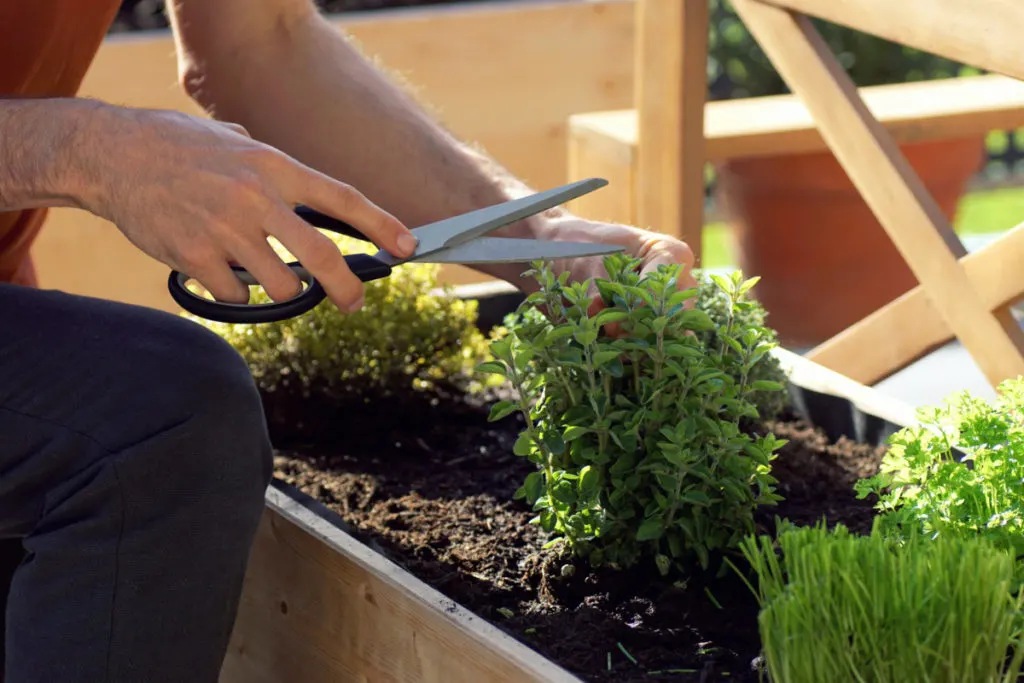
Now you’ll take a cutting at least 6″ – 10″ long. Be sure your cutting has at least 4 – 6 leaves on it and at least one node.
These little joints on the stems contain the cells responsible for making new leaves, buds, and stems. For many plants, this node also tells the plant to produce roots, even if the roots don’t grow from the node.
When taking cuttings of woody-stemmed herbs, it’s best to snip newer growth on the tip of the plant that isn’t tough yet.
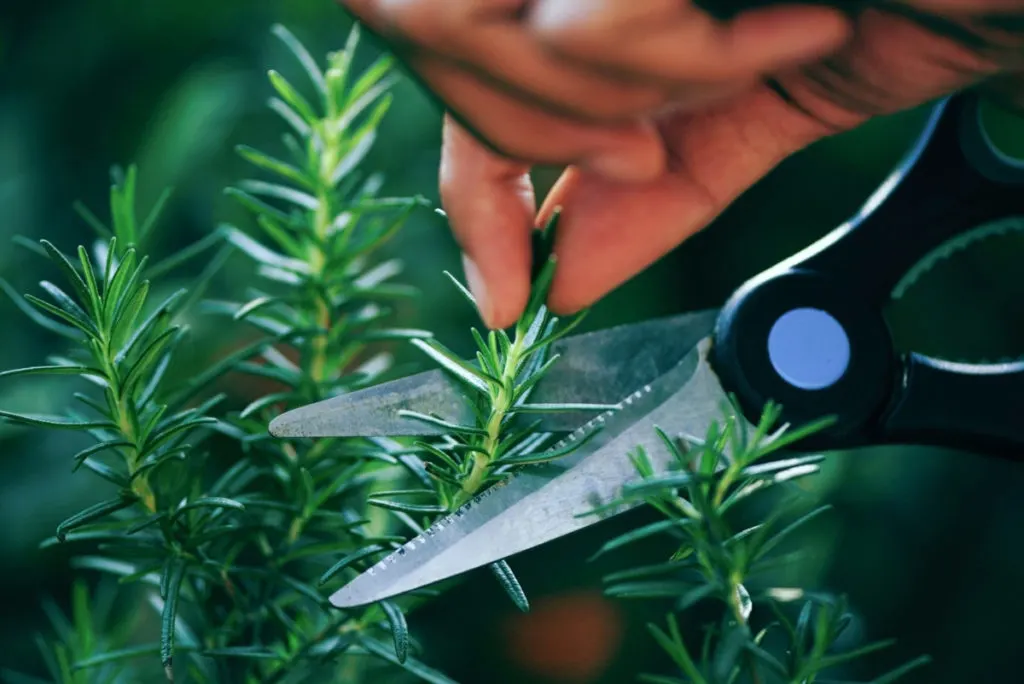
Strip any leaves from the lower half of the cutting, making sure you leave at least four leaves at the top of the plant.
When propagating herbs (and nearly all plants), you’ve got two choices – water propagation or soil propagation. Both are equally easy and will yield good results. In the end, which you choose usually comes down to personal preference.
Water
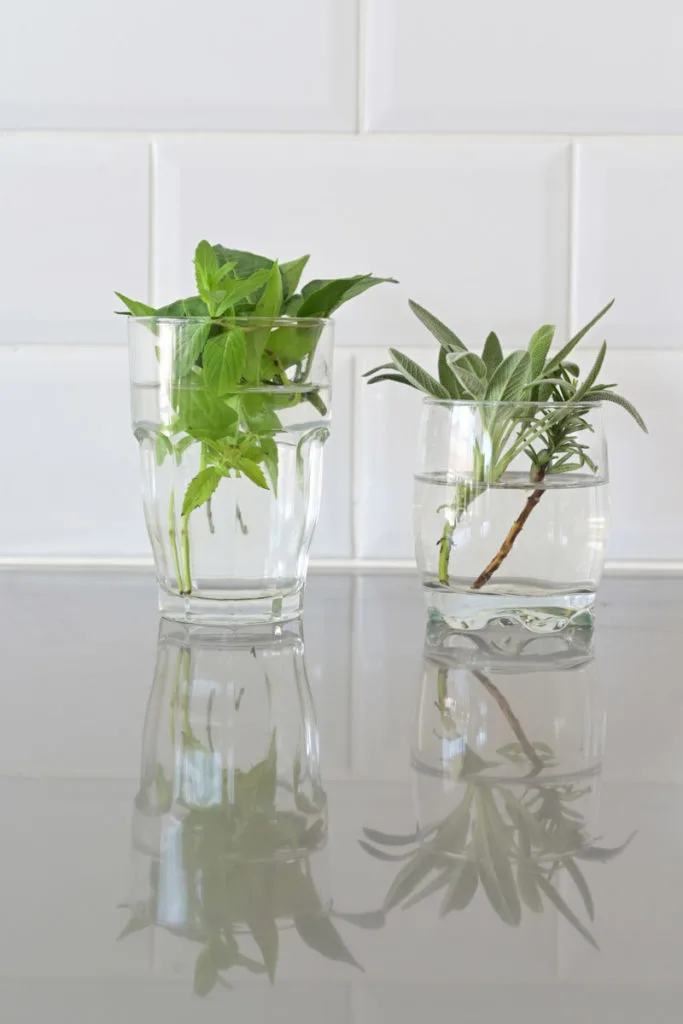
With water propagation, you’ll be placing your cutting into a small vessel of water and waiting for a root system to develop. Old jam or pickle jars are great for propagating. Place your cutting in the water and place the jar in a sunny location.
You can add a tiny bit of fertilizer to help your herb cutting along. I have always had great success using a fish fertilizer for propagation (and gardening in general). I highly recommend Alaska Fish Fertilizer, this is all I use, and it’s pretty easy to find.
Be sure to monitor your water level so tiny new roots don’t dry out, and change the water weekly.
Once your cutting has a well-developed root system, plant it in a container or your garden.
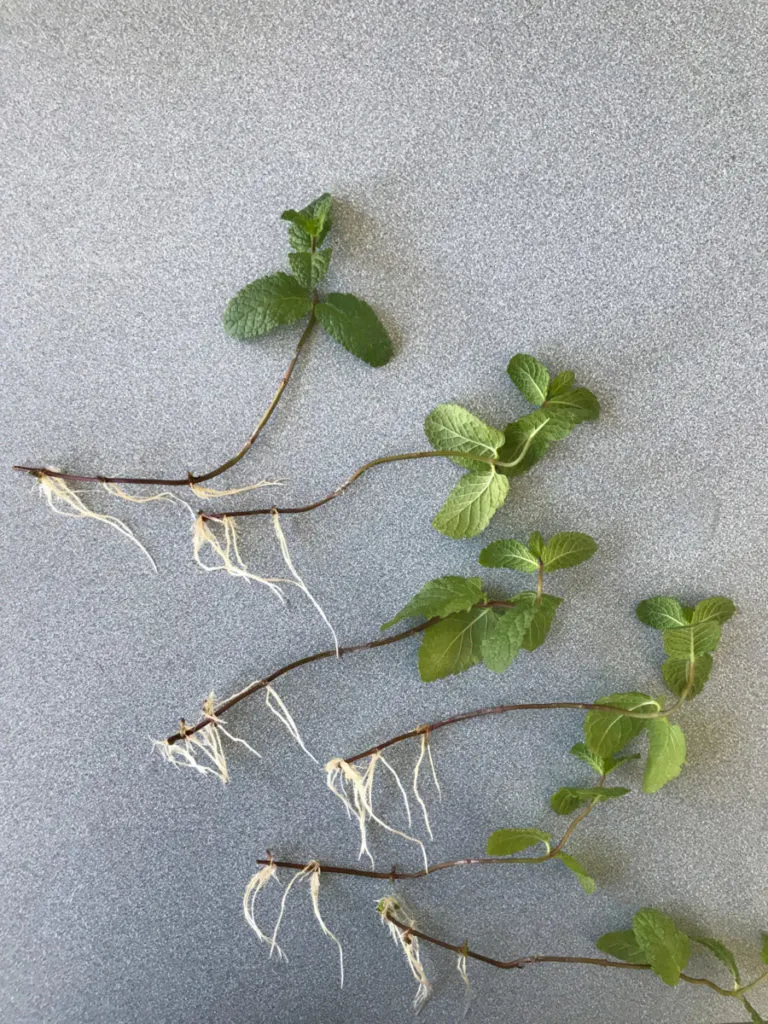
I like using water propagation, mainly because I can see the roots developing, and I know something is actually happening. Water propagation works especially well for soft-stemmed herbs like basil or mint.
Soil
Your second option for propagating an herb cutting is simply to plunk it straight in the soil. Woody-stemmed herbs such as rosemary or thyme do well with soil propagation, but you can also propagate soft-stemmed herbs directly in the soil too.
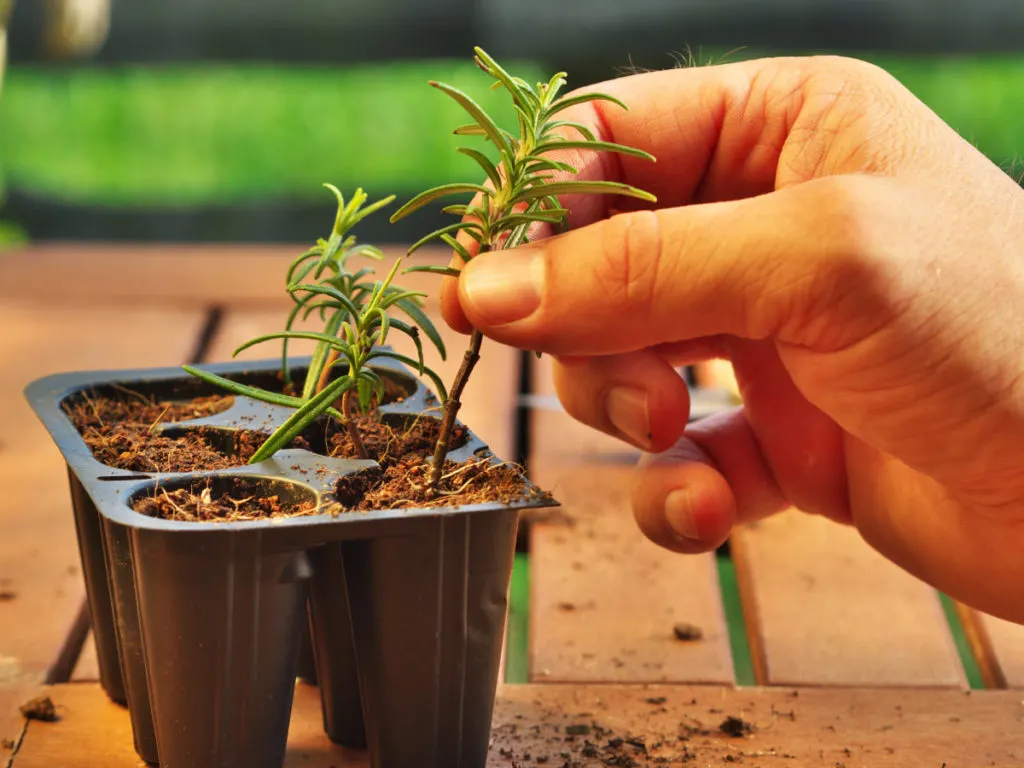
You’ll start with a small container filled with well-draining potting soil. Use a chopstick or other utensil to make a long, narrow hole in the soil. Place your cutting soil up to an inch from the bottom-most leaves and gently press the soil around it.
Water the new cutting well and as it needs it while it develops roots.
Because you can’t see the roots developing, your herb cutting may look like a stick in the dirt, doing nothing for quite some time. Usually, I forget about it, and then one day, I notice new leaves or stems on my cutting.
As long as the cutting looks good and doesn’t begin drooping or turning brown, it’s most likely growing a lovely root system down in the dirt out of view.
What Herbs Can I Propagate?
Well, all of them, however, the better question to ask is, “Is it worth it?” While you can propagate most herbs, it may not make sense to do so.
For instance, say you live in zone 4 and want to propagate an annual herb. Let’s also say you’re taking cuttings from a plant growing in your garden to plant your new cuttings in the garden too. By the time your cutting develops a healthy root system and can be planted in a pot or your garden, your growing season may be drawing to a close. In this case, it may be easier just to purchase a couple more nursery starts or plan to plant more of that herb next year.
When choosing herbs to propagate from cuttings, there are a few things to plan for, such as:
- whether or not it’s an annual or a perennial
- your growing zone
- whether your herb will be planted outside or in a container
- if you’re planting it in a container, will you keep it indoors, outdoors, or both
As I mentioned earlier, some herbs are especially suited for propagating via cutting. Of course, if you don’t see your desired herb on here, don’t be dissuaded; give it a try. You may be pleasantly surprised.
Soft Stem
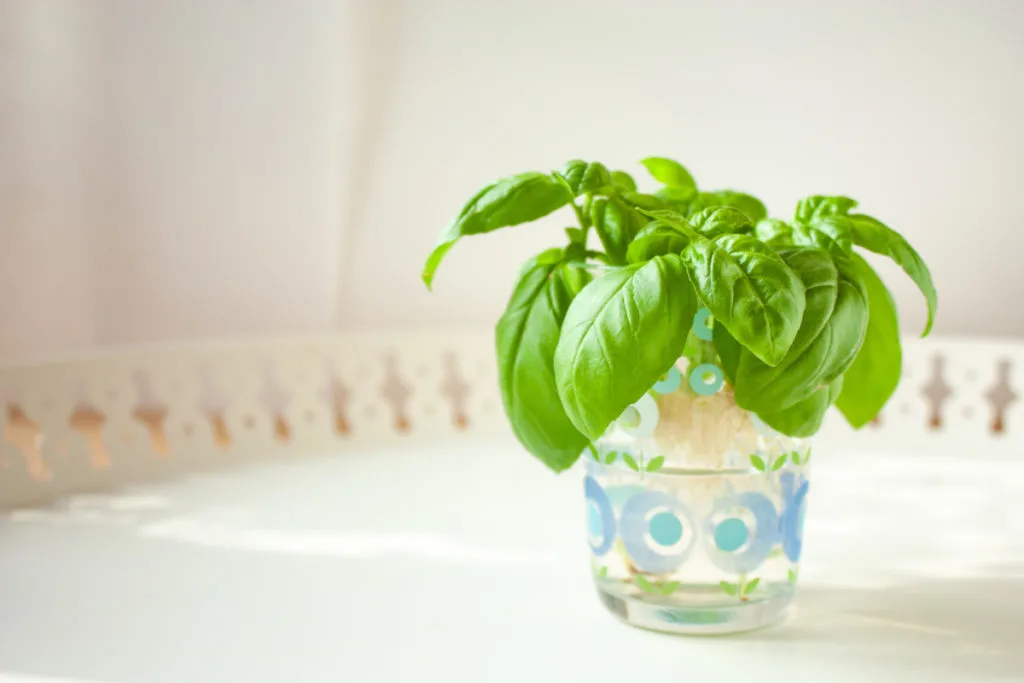
- Basil (once you’ve got your plants established, learn how to prune basil for an amazing yield)
- Mints
- Lemon Balm (here’s everything you need to know to grow this fragrant herb)
- Lemon Verbena
- Parsley (learn to grow massive bunches of parsley at a time)
- Salvia
- Savory
- Stevia
- Tarragon
Woody Stem
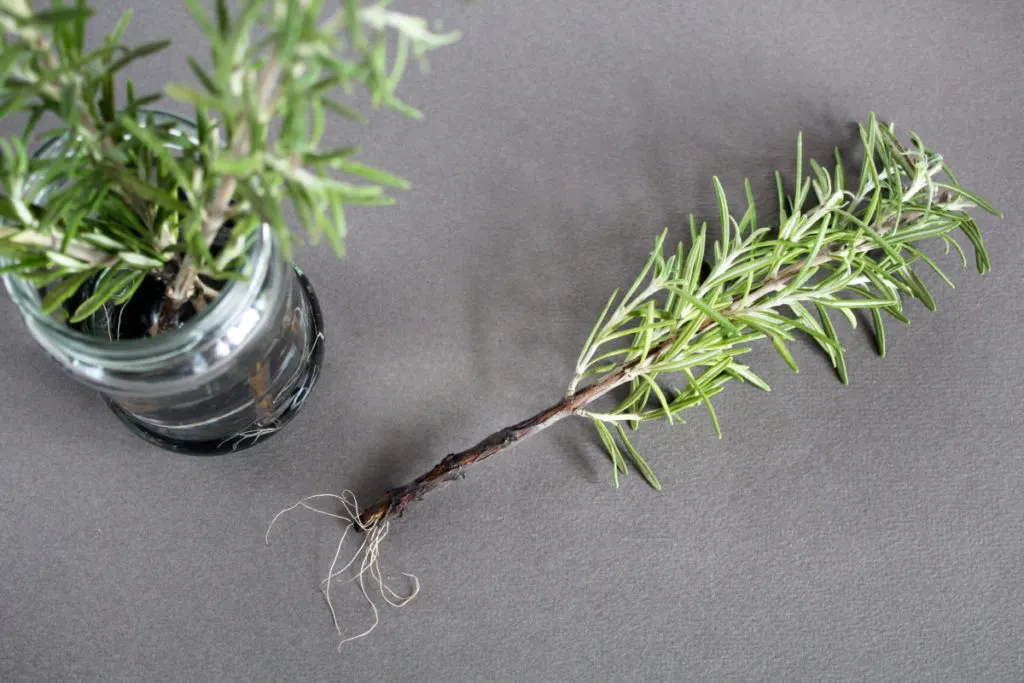
- Lavender
- Marjoram
- Oregano
- Rosemary
- Sage
- Thyme
Sourcing Herbs for Cuttings
A great way to expand your herb garden is to swap cuttings with friends and neighbors. I’ve often asked for cuttings from a friend’s well-established plant, especially if it’s something interesting or something I’m having a hard time finding elsewhere.
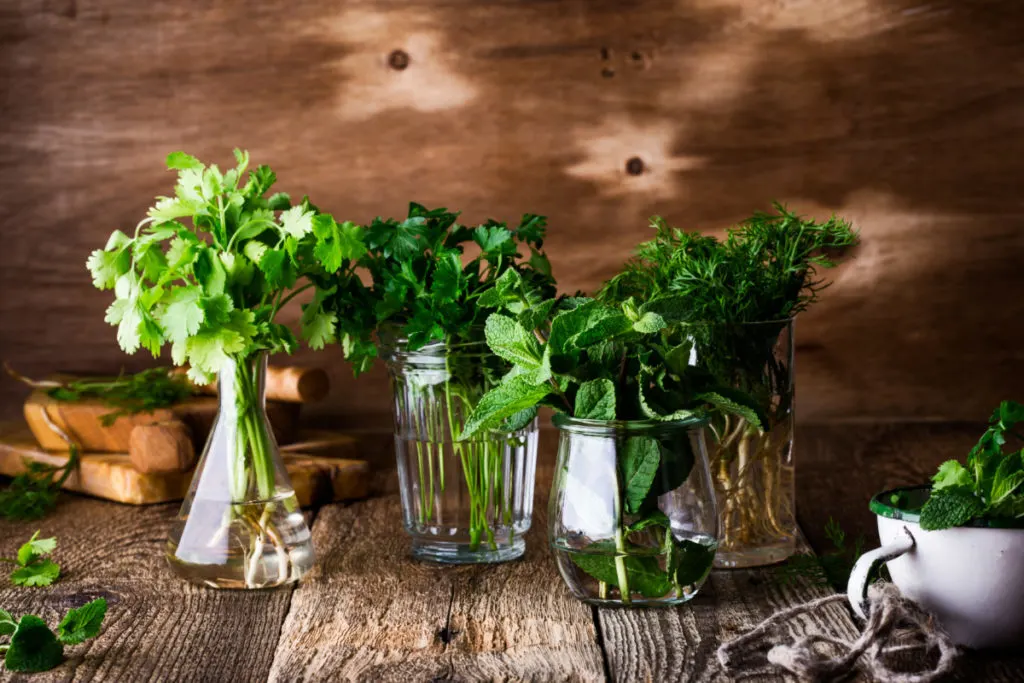
For a thoughtful hostess gift, take cuttings from several varieties of your own herbs and place them in a jar of water. In a few weeks, your gift recipient will have the makings of a windowsill herb garden.
Now that you’re an herb propagating master, you could easily keep your neighborhood stocked in cooking herbs. Or maybe not. But you should definitely consider expanding your culinary herb garden and growing an herb garden specifically for blending your own herbal teas.
Can’t get enough of propagating new plants? Try these 9 Houseplants That Are Ridiculously Easy to Propagate

Get the famous Rural Sprout newsletter delivered to your inbox.
Including Sunday ramblings from our editor, Tracey, as well as “What’s Up Wednesday” our roundup of what’s in season and new article updates and alerts.

